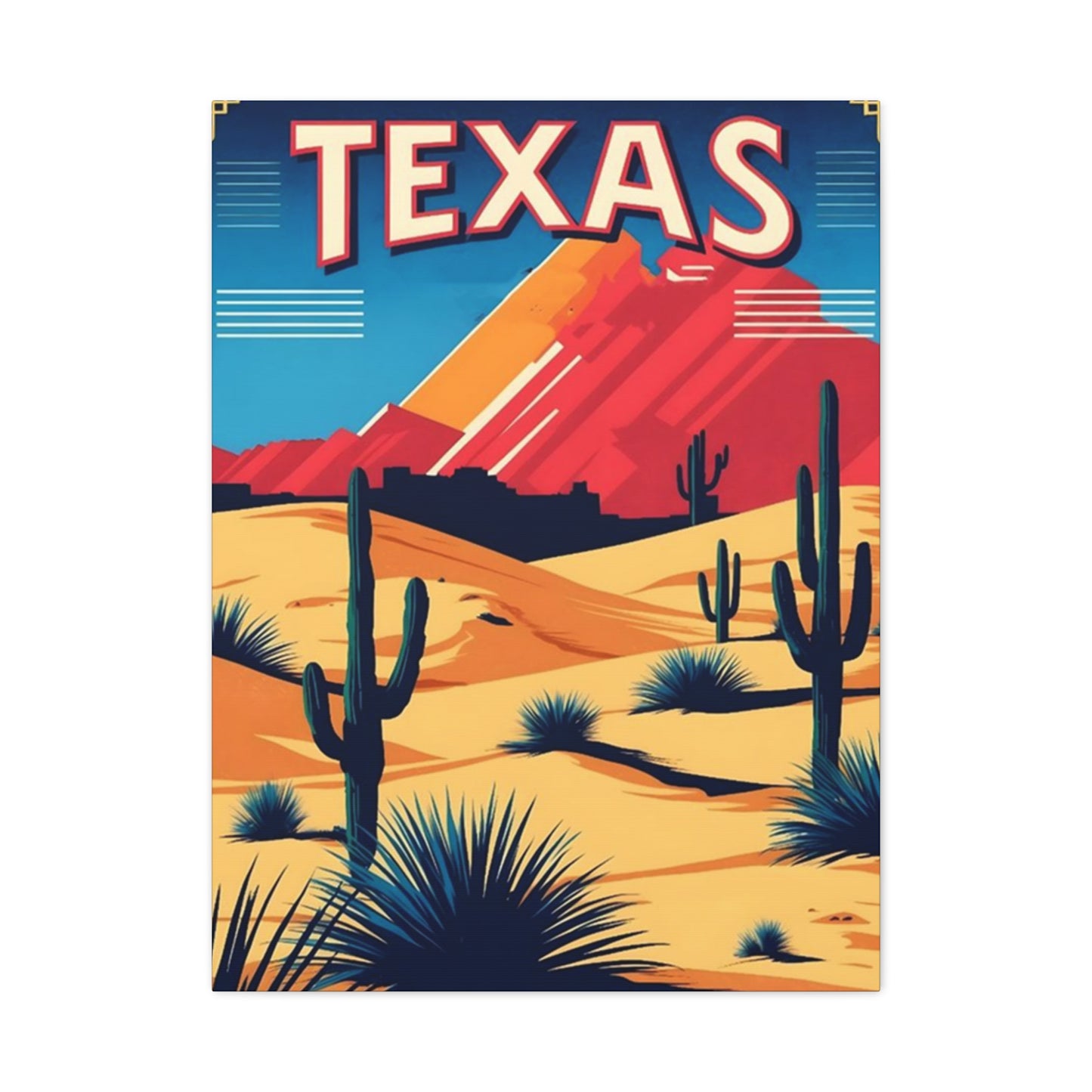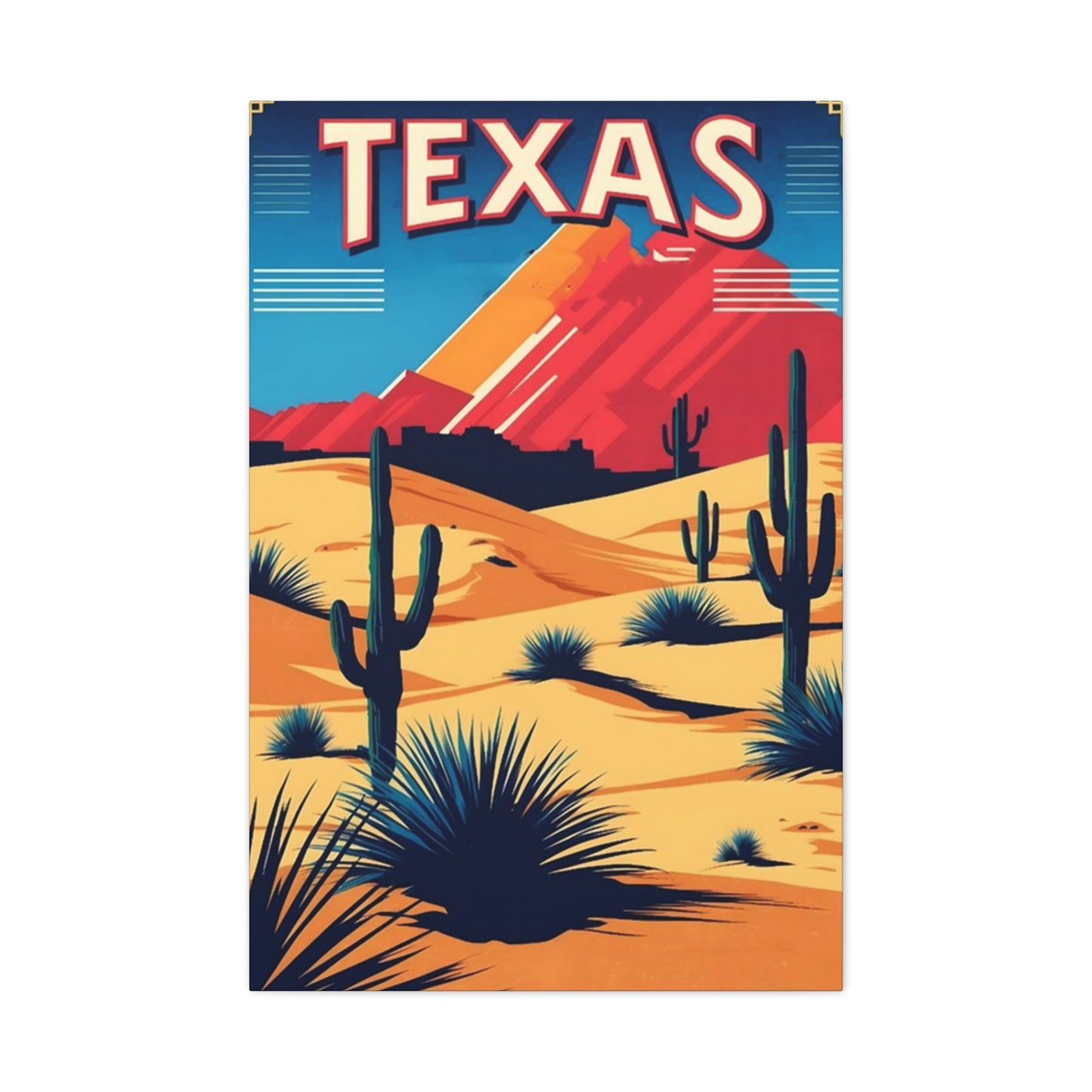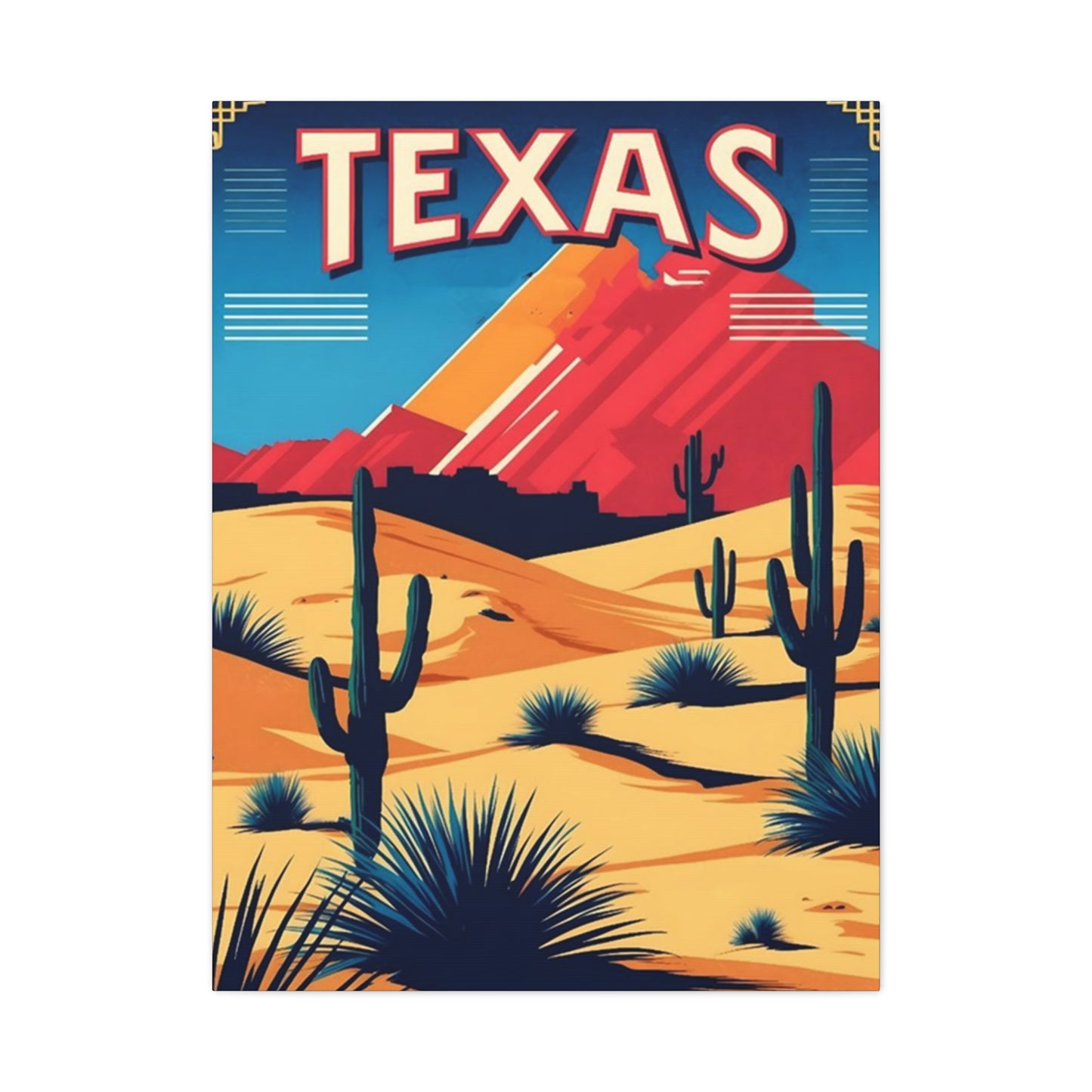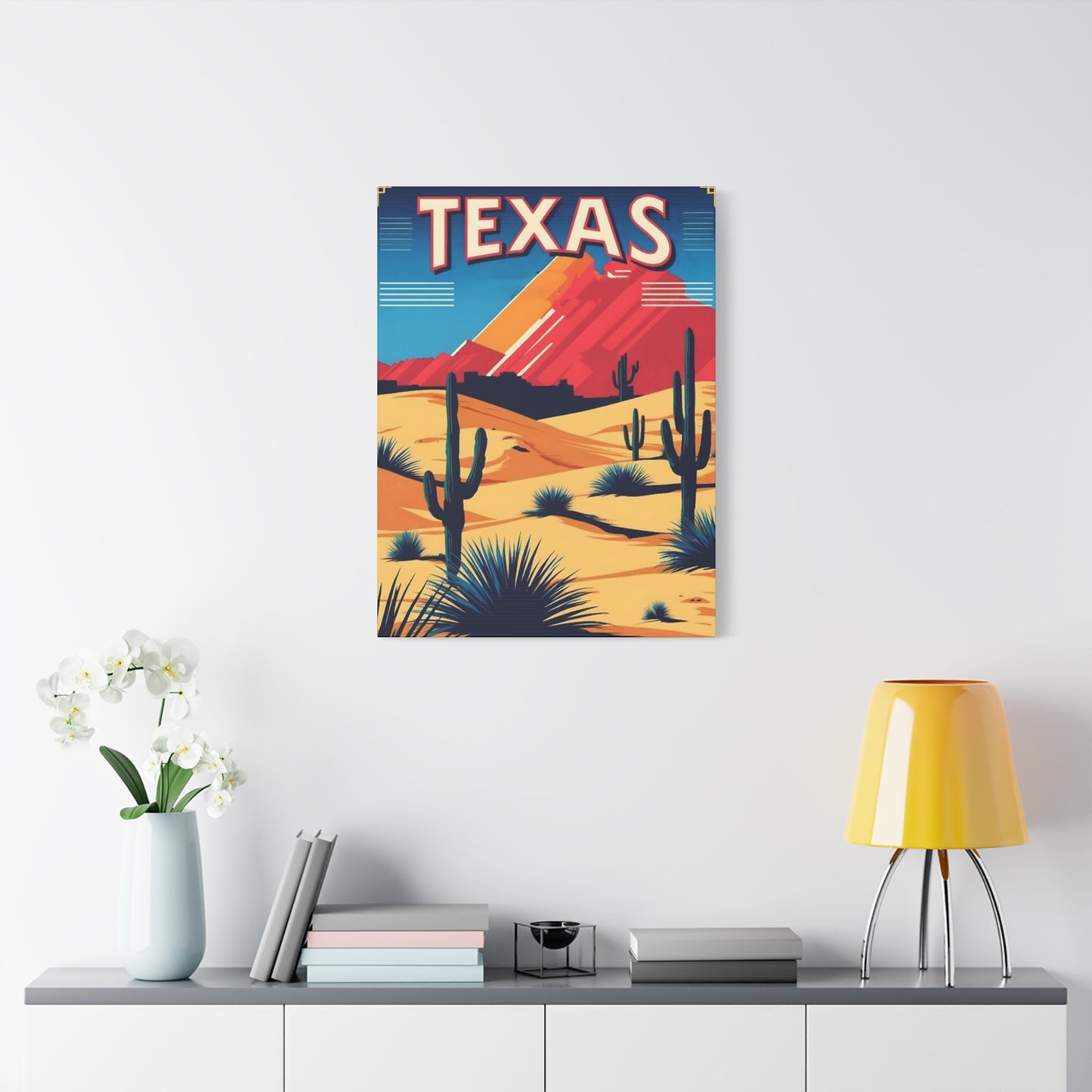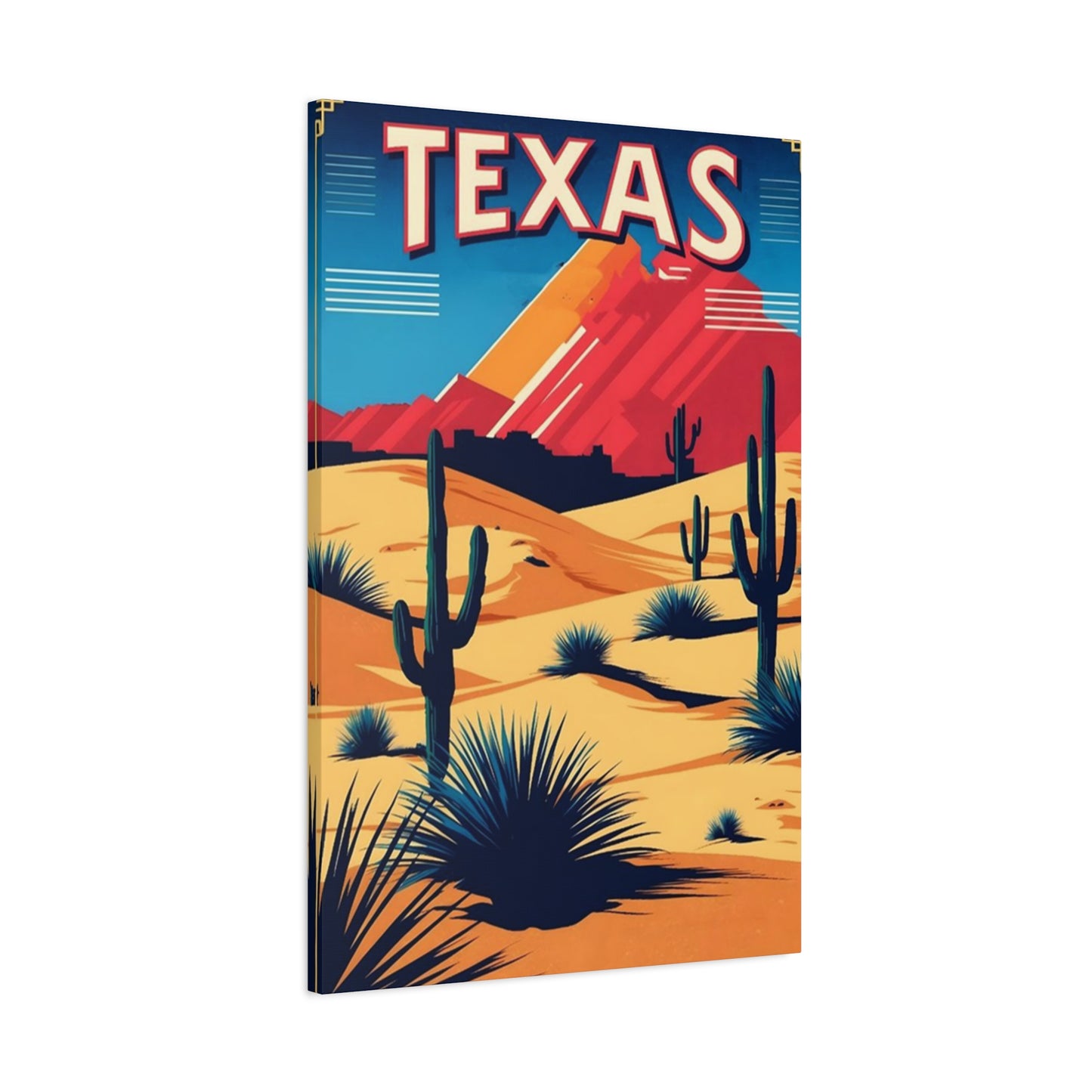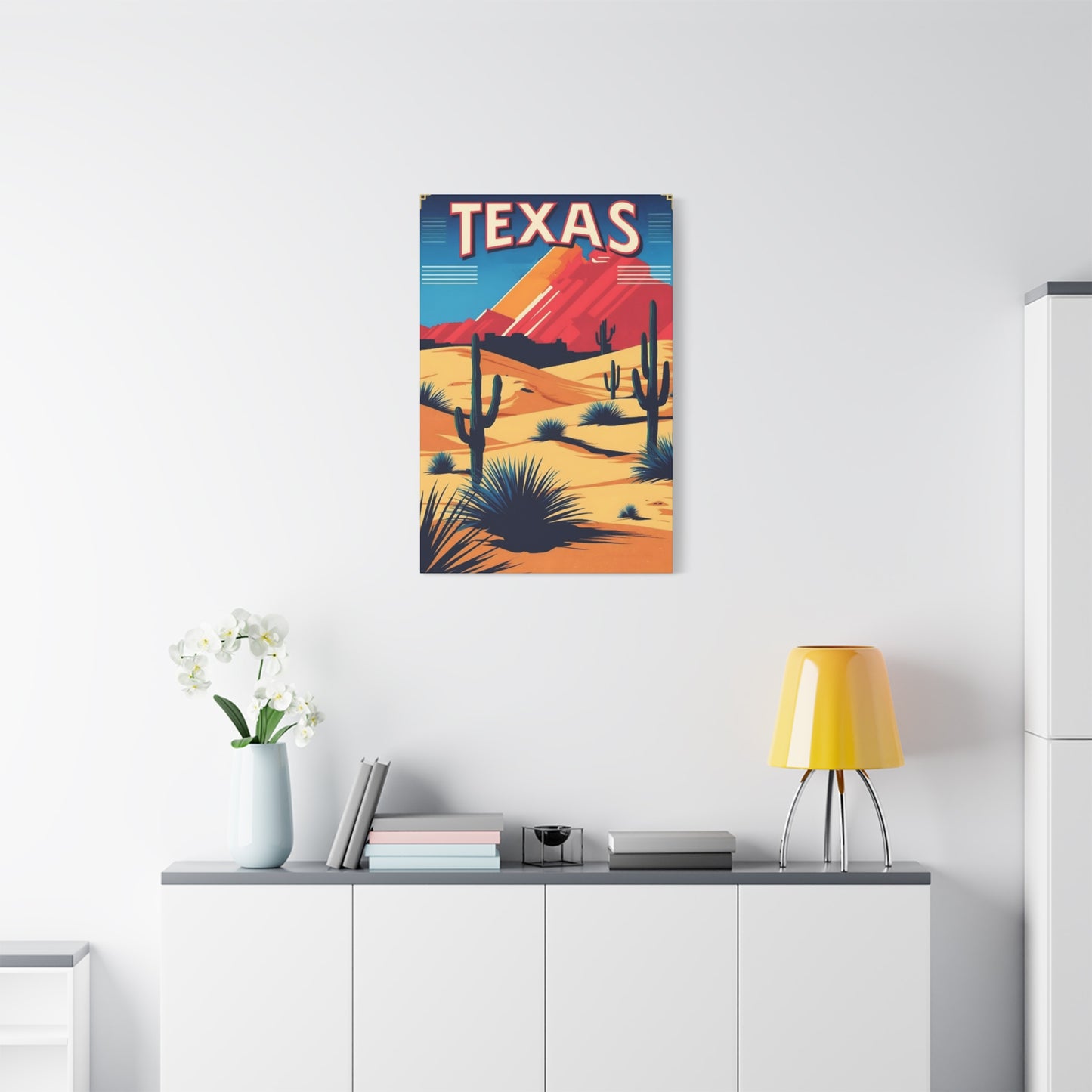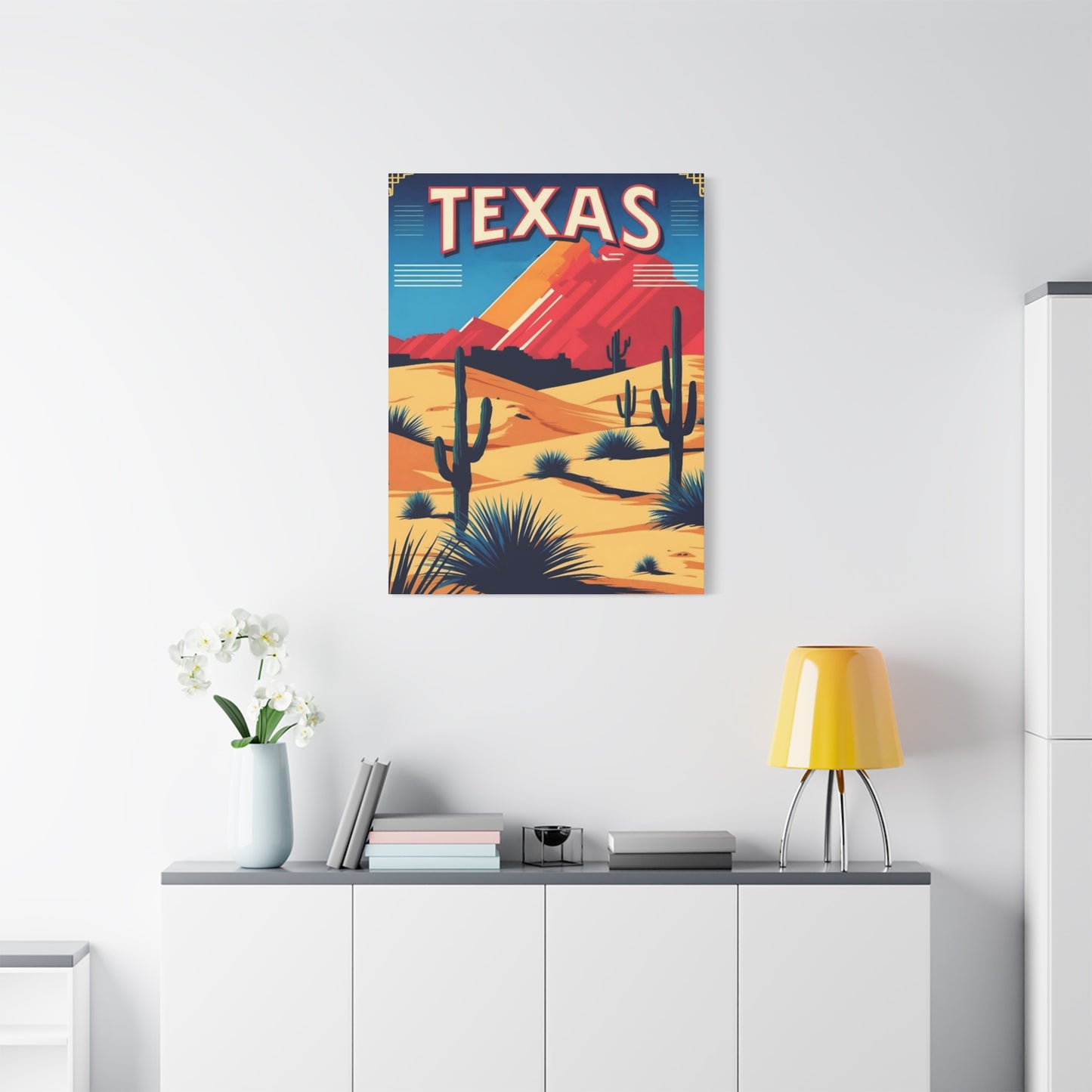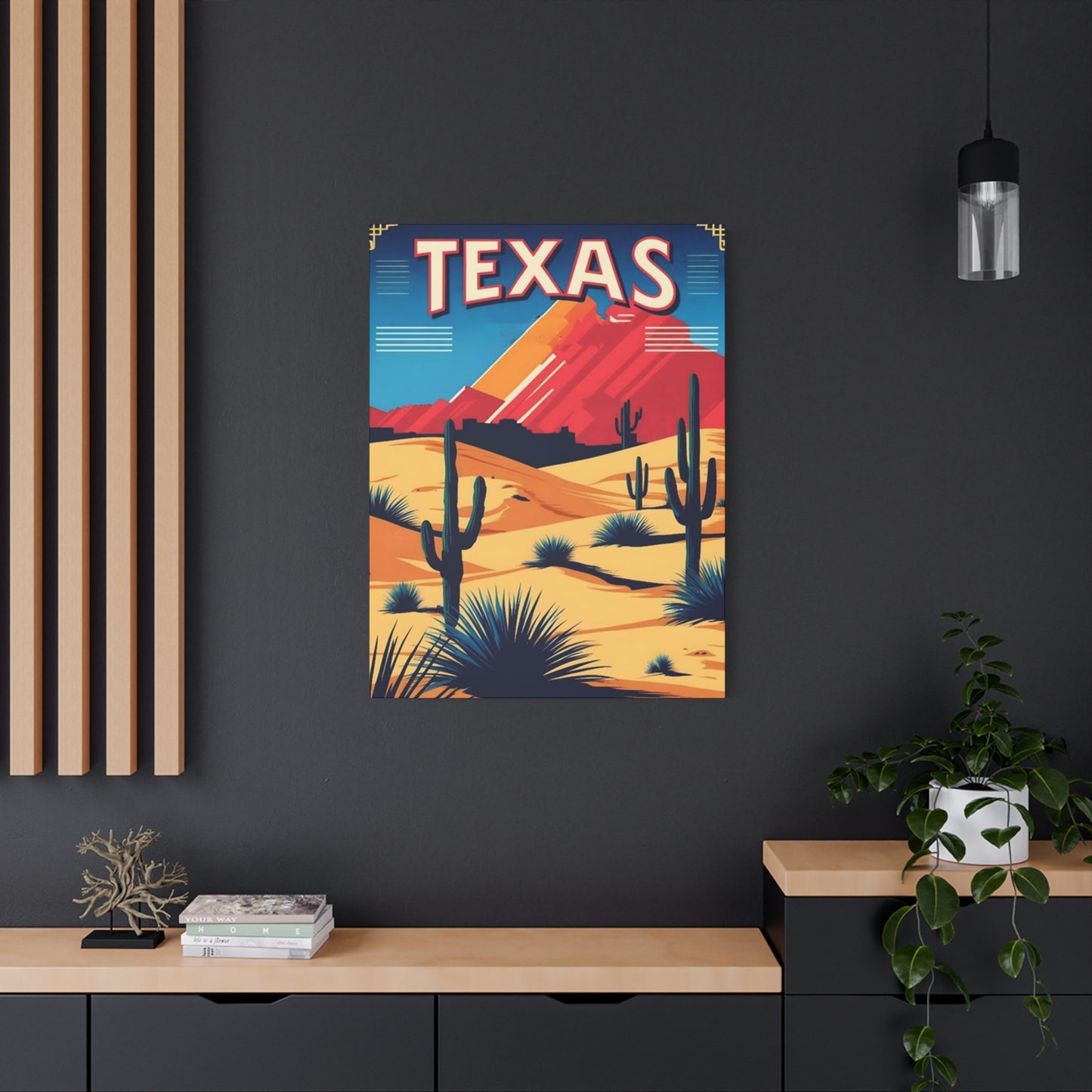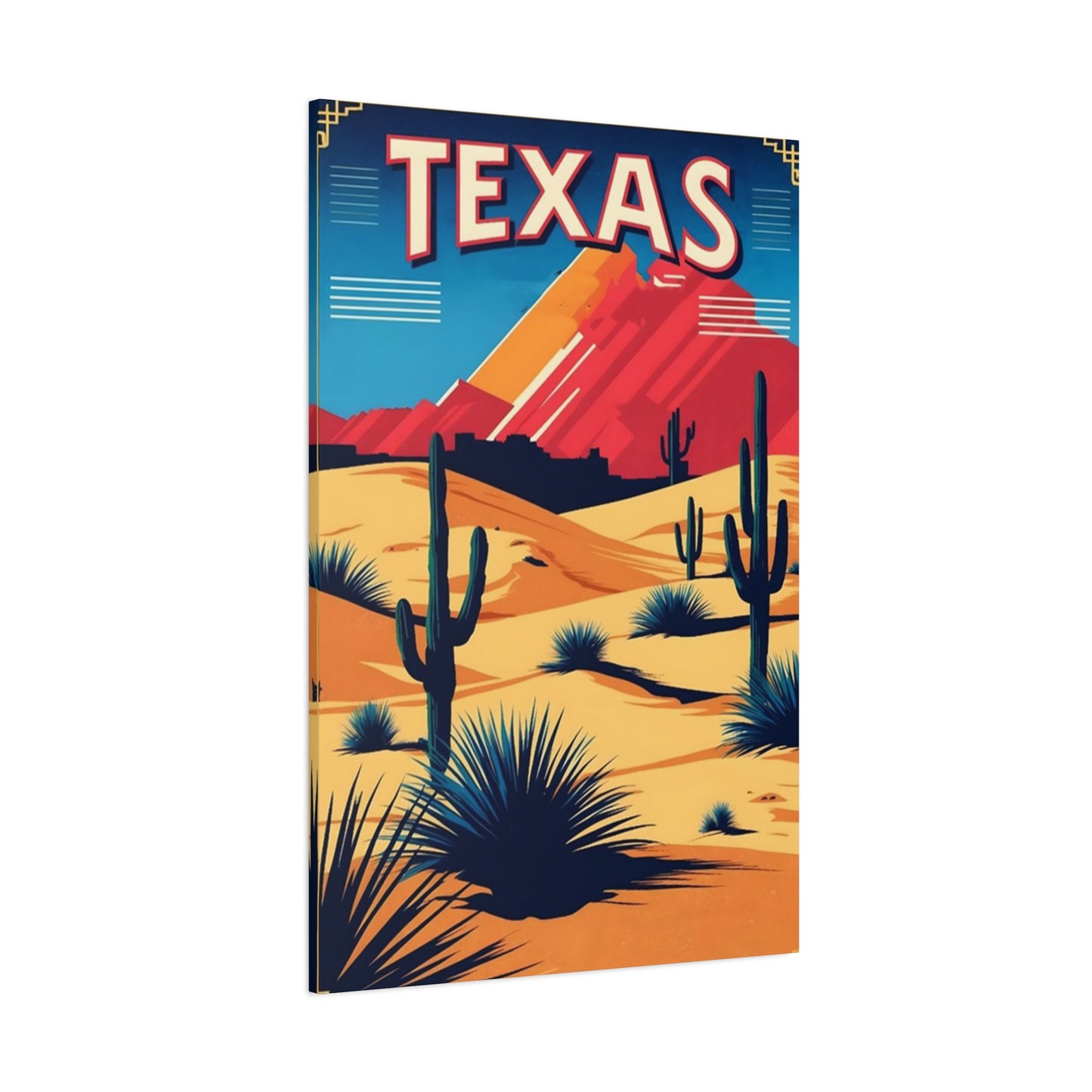Texas Landscape Wall Art: Celebrating the Lone Star State's Natural Beauty
The vast expanses of Texas offer some of the most breathtaking and diverse natural scenery in the United States. From rolling hill country dotted with wildflowers to dramatic desert landscapes under endless skies, the Lone Star State provides an incredible canvas of natural beauty that has inspired artists and art lovers for generations. Texas landscape wall art captures these magnificent vistas and brings them into our homes, offices, and personal environments, allowing us to connect with the state's natural heritage while adding character and warmth to our living areas.
The appeal of Texas landscape wall art extends far beyond simple decoration. These artistic pieces serve as windows into the soul of Texas, reflecting the state's rich cultural heritage, diverse geographical features, and the independent spirit that defines Texan identity. Whether you're a native Texan looking to celebrate your roots, a transplant wanting to honor your adopted home, or simply someone who appreciates the raw beauty of American landscapes, Texas-themed artwork offers a powerful way to express your connection to this remarkable region.
The popularity of Texas landscape wall art has grown significantly in recent years, driven by both a renewed appreciation for regional art and the desire to create more personalized, meaningful living environments. Modern homeowners and decorators are increasingly moving away from generic mass-produced artwork toward pieces that tell stories, evoke emotions, and reflect personal connections to place and heritage. Texas landscape art perfectly fulfills these desires, offering viewers a chance to experience the state's natural wonders daily while supporting artistic traditions that celebrate American regional identity.
From the misty mornings of East Texas forests to the stark beauty of West Texas deserts, from the coastal marshlands of the Gulf to the limestone cliffs of the Hill Country, Texas landscapes offer an incredible variety of scenes and moods that translate beautifully into artistic expression. Artists working in various mediums have long been drawn to these diverse environments, creating works that capture not just the visual appeal of Texas landscapes but also their emotional and spiritual resonance.
The market for Texas landscape wall art encompasses everything from vintage reproductions of classic Texas scenes to contemporary interpretations by modern artists. Photography, painting, digital art, and mixed media all contribute to this rich artistic tradition, ensuring that there are options available to suit every taste, budget, and decorative style. Whether you prefer the nostalgic charm of vintage travel posters, the precision of contemporary photography, or the interpretive beauty of painted landscapes, the world of Texas landscape wall art offers something to enhance any environment.
Where to Find Texas Landscape Wall Art
Discovering authentic and high-quality Texas landscape wall art requires knowing where to look and what to look for in terms of artistic merit, authenticity, and craftsmanship. The marketplace for Texas-themed artwork has expanded dramatically with the growth of online retailers, but traditional venues continue to offer unique advantages for serious collectors and casual buyers alike.
Art galleries throughout Texas represent some of the finest landscape artists working today, providing opportunities to view original works in person and often to meet the artists themselves. Cities like Austin, Dallas, Houston, and San Antonio host numerous galleries specializing in Texas and Southwest art, where visitors can explore a wide range of styles and price points. These galleries often feature rotating exhibitions that highlight different aspects of Texas landscapes, from seasonal celebrations of bluebonnet fields to exhibitions focusing on specific geographical regions like Big Bend or the Panhandle Plains.
Regional art fairs and festivals provide excellent opportunities to discover emerging artists and unique pieces while supporting local creative communities. Events like the Main Street Arts Festival in Fort Worth, Westfest in West Texas, and the numerous art walks that take place in cities across the state offer chances to meet artists, see works in progress, and often to commission custom pieces that capture specific locations or scenes that hold personal significance.
Museum gift shops, particularly those associated with institutions like the Witte Museum in San Antonio, the Panhandle-Plains Historical Museum in Canyon, or the George Ranch Historical Park, often carry carefully curated selections of Texas landscape art that emphasize historical accuracy and regional authenticity. These venues frequently feature works by established Texas artists alongside reproductions of historical artwork that documents the state's natural heritage.
Online marketplaces have revolutionized access to Texas landscape wall art, making it possible to discover artists and works from across the state and beyond. Platforms specializing in regional art often feature detailed artist biographies, high-resolution images that allow for careful examination of techniques and details, and customer reviews that provide insights into quality and satisfaction. Many Texas artists maintain their own websites and online galleries, offering direct access to their work and the opportunity to discuss custom commissions or specific requests.
Antique stores and vintage shops throughout Texas often house remarkable discoveries for those seeking historical Texas landscape artwork. Original travel posters, vintage postcards that have been professionally mounted and framed, and artwork by lesser-known regional artists from past decades can often be found at reasonable prices. These venues require patience and regular visits, as inventory changes frequently, but they can yield truly unique finds that add historical depth to any collection.
Local framing shops often serve as informal galleries, displaying the work of regional artists and maintaining connections with the local art community. These businesses frequently have knowledge of artists working in the area and can provide valuable recommendations based on specific preferences or requirements. Additionally, professional framers can offer advice on presentation techniques that enhance the impact of Texas landscape artwork while providing appropriate protection for long-term preservation.
University galleries and art departments, particularly at institutions like the University of Texas system schools, Texas A&M University, and regional colleges throughout the state, frequently showcase student and faculty work that includes innovative approaches to Texas landscape themes. These venues often offer more experimental or contemporary interpretations of traditional landscape subjects, appealing to collectors interested in emerging artistic trends.
Estate sales and auctions can provide opportunities to acquire significant pieces of Texas landscape art, sometimes including works by well-known artists or unique historical pieces. These venues require some knowledge of Texas art history and artist signatures, but they can offer exceptional value for those willing to do their research and take the time to attend sales regularly.
Art cooperatives and collectives, found in many Texas communities, showcase the work of local artists in supportive, community-oriented environments. These venues often feature affordable original works and prints, making Texas landscape art accessible to a broader range of buyers while supporting grassroots artistic communities throughout the state.
Decorating with Texas Landscape Posters
Texas landscape posters offer versatility and affordability while maintaining the visual impact necessary to enhance any decorating scheme. The key to successful decorating with these pieces lies in understanding how to select, position, and integrate them into existing décor while allowing their natural beauty and regional character to shine through effectively.
Scale and proportion play crucial roles in the effective use of Texas landscape posters. Large-format pieces work exceptionally well as focal points in spacious rooms, drawing the eye and establishing a strong sense of place that can anchor an entire decorating scheme. These substantial works are particularly effective above sofas, beds, or dining areas where they can command attention without overwhelming other design elements. Medium-sized pieces offer greater flexibility, working well in groupings or as standalone accents that complement furniture arrangements and architectural features.
Creating gallery walls using multiple Texas landscape posters allows for the development of narrative themes that tell stories about different regions, seasons, or aspects of Texas natural beauty. This approach works particularly well in hallways, stairwells, or large wall areas where a single piece might appear lost or inadequate. When developing gallery wall arrangements, consider creating visual relationships between pieces through shared color palettes, similar framing styles, or thematic connections that guide viewers through a cohesive visual journey.
Color coordination between Texas landscape posters and existing room colors can either provide harmonious integration or striking contrast, depending on the desired effect. The warm earth tones, brilliant blues, and golden hues typical of Texas landscape imagery often complement both traditional and contemporary color schemes. Neutral backgrounds allow the natural colors in landscape posters to take center stage, while bolder wall colors can create dramatic backdrops that intensify the visual impact of the artwork.
Lighting considerations are essential for maximizing the impact of Texas landscape posters. Natural light can enhance the colors and details in photographic pieces, but direct sunlight should be avoided to prevent fading over time. Artificial lighting, including track lighting, picture lights, or strategically placed lamps, can create dramatic effects that highlight textures and colors while adding depth and dimension to flat poster surfaces.
Seasonal rotation of Texas landscape posters can keep decorating schemes fresh and relevant throughout the year. Spring displays might emphasize wildflower meadows and fresh green landscapes, while summer selections could focus on dramatic skies and expansive vistas. Fall arrangements might highlight the changing colors of Hill Country foliage, and winter displays could showcase the stark beauty of desert scenes or frost-covered plains.
Mixing Texas landscape posters with other decorative elements requires careful consideration of style, theme, and visual weight. These pieces often pair beautifully with natural materials like wood, stone, and leather, creating cohesive themes that emphasize connection to nature and regional heritage. Southwestern decorative accessories, vintage Texas memorabilia, and natural textures can enhance the impact of landscape artwork while maintaining authentic regional character.
Room-specific applications of Texas landscape posters should consider the function and mood appropriate to each environment. Living rooms benefit from pieces that encourage contemplation and conversation, perhaps featuring sweeping vistas or iconic landmarks that invite discussion and sharing of experiences. Bedrooms might feature more serene, peaceful scenes that promote rest and relaxation, such as quiet meadows or gentle rolling hills. Dining areas can accommodate more dramatic or colorful pieces that stimulate appetite and conversation.
The integration of Texas landscape posters into professional environments requires consideration of appropriate imagery and presentation standards. Office settings might benefit from sophisticated landscape photography that conveys professionalism while maintaining regional character. Reception areas can accommodate more dramatic or colorful pieces that create welcoming atmospheres and conversation starters for visitors and clients.
Framing and presentation options for Texas landscape posters range from simple and contemporary to elaborate and traditional, with each approach creating different visual effects and levels of formality. Simple black or natural wood frames allow the artwork to take center stage, while more ornate frames can add elegance and historical character. Matting options can provide additional visual breathing room and color coordination opportunities while protecting the artwork from direct contact with glass or acrylic glazing.
Iconic Texas Landmarks in Wall Art
Texas boasts an remarkable collection of natural and man-made landmarks that have become synonymous with the state's identity and continue to inspire artists working in various mediums. These iconic features translate beautifully into wall art, offering viewers the opportunity to connect with famous Texas locations and share in the collective heritage that defines Lone Star State pride.
Big Bend National Park represents one of Texas's most dramatic and frequently depicted natural landmarks, offering artists an incredible variety of subjects from the towering peaks of the Chisos Mountains to the winding curves of the Rio Grande as it carves through spectacular canyon systems. The park's diverse ecosystems, ranging from desert lowlands to mountain forests, provide endless inspiration for landscape artists who seek to capture the raw beauty and geological diversity that defines West Texas. Wall art featuring Big Bend scenes often emphasizes the park's sense of scale and isolation, creating powerful visual statements about the relationship between humans and the natural world.
The Texas Hill Country, with its rolling terrain, clear spring-fed streams, and seasonal wildflower displays, has inspired countless artistic interpretations that celebrate the region's pastoral beauty and seasonal transformations. Bluebonnet fields stretching to distant horizons have become perhaps the most recognizable symbol of Texas natural beauty, appearing in everything from vintage travel posters to contemporary photography. Artists working with Hill Country subjects often focus on the interplay between cultivated landscapes and wild areas, creating works that reflect the region's unique blend of agricultural heritage and natural preservation.
Palo Duro Canyon, often called the "Grand Canyon of Texas," provides artists with subjects that emphasize geological time scales and the powerful forces that have shaped the Texas landscape over millions of years. The canyon's layered rock formations, revealed in brilliant colors that change throughout the day, offer opportunities for both realistic and interpretive artistic approaches. Wall art featuring Palo Duro often emphasizes the canyon's dramatic scale and the way sunlight transforms the colors and textures of its ancient rock faces.
The Texas Gulf Coast, with its barrier islands, coastal marshes, and expansive beaches, has inspired artists who appreciate the dynamic relationship between land and sea. Sunrise and sunset scenes over Gulf waters, shrimp boats working coastal bays, and the distinctive vegetation of coastal ecosystems all appear frequently in Texas landscape wall art. These coastal scenes often emphasize the horizontal expanses and ever-changing skies that define Gulf Coast environments.
Caddo Lake, with its mysterious cypress forests and mirror-still waters, represents East Texas's unique wetland environments and has inspired artists who appreciate the region's more intimate and mysterious landscapes. The ancient cypress trees, draped with Spanish moss and reflected in dark waters, create scenes that seem almost primordial, offering viewers connection to Texas's prehistoric natural heritage.
The Guadalupe Mountains, rising dramatically from the surrounding Chihuahuan Desert, represent Texas's highest elevations and some of its most challenging and beautiful hiking terrain. Artists depicting these peaks often emphasize their isolation and the dramatic contrast between desert lowlands and mountainous terrain, creating works that celebrate the diversity of Texas geography within relatively small areas.
South Padre Island and the barrier island chain along the Texas coast have inspired countless artistic interpretations that celebrate the dynamic relationship between wind, waves, and sand. These shifting landscapes offer artists opportunities to explore themes of impermanence and natural cycles while creating beautiful visual statements about coastal environments and their importance to Texas natural heritage.
The Davis Mountains of West Texas, with their unique blend of desert and mountain ecosystems, have attracted artists who appreciate the region's clear skies, diverse wildlife, and distinctive vegetation. The area's astronomical observatories and dark night skies have inspired works that explore the relationship between terrestrial and celestial landscapes, creating pieces that celebrate both earthly and cosmic beauty.
Enchanted Rock, the massive pink granite dome rising from the Hill Country, has become an iconic symbol of Texas geological heritage and continues to inspire artists who appreciate both its visual drama and its cultural significance to Native American and pioneer history. The rock's changing colors throughout the day and its commanding presence in the surrounding landscape make it a compelling subject for artistic interpretation.
The Piney Woods of East Texas, with their towering pine forests, hidden streams, and seasonal color changes, represent a side of Texas that surprises many visitors and provides artists with subjects that emphasize the state's botanical diversity. These forest scenes often focus on the interplay of light and shadow, the textures of bark and foliage, and the peaceful atmosphere of woodland environments.
Lost Maples State Natural Area, famous for its spectacular fall color displays, has inspired artists who specialize in seasonal landscape themes. The area's unique ecosystem supports one of Texas's most reliable autumn color shows, creating opportunities for artists to capture the brilliant reds, oranges, and yellows that transform the Hill Country each fall.
The Llano Uplift region, with its exposed granite outcroppings and seasonal wildflower displays, offers artists subjects that combine geological interest with botanical beauty. The area's unique pink granite formations, often surrounded by colorful wildflowers, create striking visual contrasts that translate beautifully into artistic compositions.
Texas Hill Country Poster Ideas
The Texas Hill Country region offers an incredibly rich tapestry of natural beauty that translates magnificently into poster art, providing endless inspiration for artists and endless pleasure for viewers who appreciate the subtle beauty of rolling terrain, seasonal wildflower displays, and the pastoral landscapes that define this beloved region of Texas.
Wildflower season in the Hill Country, particularly the annual bluebonnet displays that transform entire hillsides into seas of blue from late March through early May, provides some of the most popular and recognizable subjects for Texas landscape posters. These seasonal spectacles create opportunities for both wide-angle compositions that capture entire fields of color and more intimate studies that focus on individual flower clusters or the interplay between different wildflower species. Successful wildflower posters often incorporate elements like old fence posts, rustic gates, or distant hills to provide visual anchors and depth to compositions dominated by masses of colorful blooms.
The Hill Country's distinctive limestone formations, carved by millions of years of water erosion, create dramatic backdrops and foreground elements that add geological interest to landscape compositions. These rock outcroppings, often called "limestone cliffs" or "bluffs," provide natural layering that helps organize complex compositions while adding textural variety to posters that might otherwise rely solely on vegetation for visual interest. The way these limestone formations catch and reflect light throughout the day offers opportunities for dramatic lighting effects that can transform simple pastoral scenes into compelling artistic statements.
Seasonal changes in Hill Country vegetation provide poster themes that can appeal to different aesthetic preferences and seasonal decorating needs. Spring compositions might emphasize the fresh green growth and wildflower displays that follow winter dormancy, while summer scenes could focus on the deeper greens and more subdued color palettes that characterize the region during hotter months. Fall brings opportunities to capture the changing colors of native trees and shrubs, particularly the brilliant reds and oranges of bigtooth maples and the golden yellows of cottonwoods along creek bottoms.
Hill Country streams and rivers, including famous waterways like the Guadalupe, Blanco, and San Marcos rivers, offer opportunities for poster compositions that incorporate the movement and reflective qualities of water into landscape scenes. These waterways, often flowing over limestone beds that create natural pools and small waterfalls, provide focal points that can anchor compositions while adding the visual and emotional appeal of moving water to pastoral scenes.
Historic elements scattered throughout the Hill Country, including old homesteads, stone bridges, and pioneer cemeteries, offer opportunities to create posters that combine natural beauty with cultural heritage themes. These human-made elements, often constructed from local limestone or weathered wood, blend harmoniously with natural landscapes while adding historical depth and storytelling opportunities to poster compositions.
The Hill Country's famous live oak trees, some of which are hundreds of years old, provide dramatic natural sculptures that can serve as compelling focal points for poster compositions. These ancient trees, with their massive trunks and spreading canopies, represent the continuity of natural processes and the deep roots of Texas heritage, making them powerful symbolic elements in landscape artwork.
Sunset and sunrise lighting in the Hill Country creates opportunities for dramatic poster compositions that emphasize the region's expansive skies and rolling terrain. The golden hour lighting that photographers and artists prize for its warm, flattering qualities is particularly beautiful in Hill Country settings, where unobstructed horizons and elevated viewpoints provide excellent opportunities to capture the interplay between celestial and terrestrial beauty.
Wildlife elements native to the Hill Country, including white-tailed deer, wild turkeys, and various bird species, can add life and movement to poster compositions while maintaining focus on landscape themes. These creatures, when incorporated thoughtfully into compositions, can help viewers connect emotionally with Hill Country environments while adding narrative interest to purely landscape subjects.
Ranch and agricultural elements, including cattle, horses, and traditional ranch structures like windmills and stock tanks, reflect the Hill Country's continuing agricultural heritage while providing human-scale elements that help viewers relate to the vast landscapes typical of the region. These elements can serve as focal points or supporting details, depending on the overall composition and artistic intent.
Native plant communities beyond the famous wildflowers, including prickly pear cacti, cedar elms, and various grass species, offer opportunities for poster compositions that educate viewers about Hill Country ecology while creating beautiful artistic statements. These plantings, often overlooked in favor of more dramatic subjects, can provide subtle beauty and authentic regional character to landscape posters.
Panoramic compositions that capture the Hill Country's characteristic rolling terrain and expansive views offer opportunities to create posters that emphasize the region's sense of scale and geographic unity. These wide-angle approaches can accommodate multiple elements within single compositions while maintaining the sweeping, pastoral character that defines Hill Country landscapes.
Weather phenomena typical of Hill Country environments, including dramatic thunderstorm buildups, morning mist rising from valleys, and the crystal-clear skies that follow cold fronts, provide opportunities for poster compositions that capture the dynamic, ever-changing character of Texas weather and its effects on landscape appearance and mood.
Framing Texas Landscape Posters Tips
Proper framing of Texas landscape posters is essential for both aesthetic impact and long-term preservation, requiring careful consideration of materials, techniques, and presentation styles that enhance the artwork while providing appropriate protection against environmental factors that can cause deterioration over time.
Material selection for frames should complement the style and subject matter of Texas landscape posters while providing adequate structural support and protection. Wood frames, particularly those crafted from native Texas species like mesquite, cedar, or pine, create natural harmony with landscape subjects while adding authentic regional character. These natural materials age gracefully and can develop patinas that enhance their visual appeal over time. Metal frames, including those finished in bronze, copper, or black powder coating, offer contemporary alternatives that work particularly well with modern photographic prints or minimalist artistic styles.
Conservation-quality materials are essential for protecting valuable or irreplaceable Texas landscape posters from deterioration caused by environmental factors including light, humidity, and airborne pollutants. Acid-free matting materials prevent chemical interactions that can cause discoloration or deterioration over time, while UV-filtering glazing materials protect artwork from harmful ultraviolet radiation that can cause fading and embrittlement. Museum-quality mounting techniques avoid adhesives and fastening methods that can cause permanent damage to poster materials.
Matting options for Texas landscape posters serve both aesthetic and protective functions, providing visual breathing room around artwork while creating barriers that prevent direct contact between the poster surface and glazing materials. Single mats in neutral colors like cream, white, or soft gray work well with most landscape subjects, while double matting using complementary colors can add sophistication and visual depth. The width of matting should be proportional to the size of the artwork and the scale of the room where it will be displayed.
Glazing choices include regular glass, non-reflective glass, and acrylic alternatives, each offering different advantages and disadvantages for Texas landscape poster presentation. Regular glass provides excellent optical clarity but can create reflections that interfere with viewing under certain lighting conditions. Non-reflective glass eliminates glare but may slightly reduce image sharpness and color saturation. Acrylic glazing offers impact resistance and lighter weight but can accumulate static electricity that attracts dust and debris.
Custom framing versus ready-made options presents trade-offs between cost, quality, and aesthetic flexibility. Professional custom framing allows for precise fitting, conservation-quality materials, and unlimited design options but requires higher investment and longer completion times. Ready-made frames offer convenience and lower costs but may require compromises in fit, materials, or design choices. Many frame shops offer middle-ground solutions that combine some custom elements with standardized components.
Mounting techniques for Texas landscape posters should prioritize reversibility and minimal intervention to preserve the option for future reframing or conservation treatments. Hinge mounting using acid-free paper and wheat starch paste allows posters to expand and contract naturally while maintaining secure positioning. Float mounting, which displays the entire poster including its edges, works well for pieces with interesting borders or signatures but requires larger frames and additional matting.
Color coordination between frames, mats, and Texas landscape poster subjects should enhance rather than compete with the artwork itself. Neutral frame colors typically work best, allowing the natural colors in landscape imagery to take center stage. However, frames that echo colors present in the artwork, such as earth tones or sky blues, can create pleasing harmonies when used judiciously.
Size considerations for framing Texas landscape posters should account for both the artwork dimensions and the intended display environment. Oversized pieces may require specialized hanging hardware and wall preparation, while very small pieces might benefit from larger mats or frames to achieve appropriate visual weight. The relationship between frame size and room scale affects both aesthetic impact and viewing comfort.
Hanging and installation considerations include wall type, weight distribution, and positioning for optimal viewing and lighting. Drywall installations typically require hollow wall anchors or mounting into wall studs, while masonry walls need appropriate fasteners and possibly professional installation. Picture hanging systems offer flexibility for frequently changing displays while providing secure, level mounting.
Texas Desert Scenes for Wall Art
The vast desert regions of West Texas offer some of the most dramatic and visually striking subjects for landscape wall art, presenting viewers with scenes that capture the raw beauty, stark contrasts, and spiritual qualities that have drawn artists and art lovers to desert environments for generations. These arid landscapes, characterized by expansive horizons, dramatic geological formations, and unique ecosystems adapted to harsh conditions, translate magnificently into artistic expressions that celebrate the austere beauty of Texas desert country.
Big Bend region desert scenes encompass some of Texas's most iconic and photographically compelling landscapes, where the Chihuahuan Desert meets the Rio Grande and creates a tapestry of contrasting elevations, vegetation zones, and geological features. Artists working with Big Bend subjects often emphasize the region's sense of scale and isolation, creating works that help viewers appreciate the vastness of desert country while highlighting the subtle beauty of landscapes that might initially appear barren or monotonous to untrained eyes.
Desert flora native to West Texas provides fascinating subjects for wall art that celebrates the remarkable adaptations plants have developed to survive in arid conditions. Massive century plants, also known as agaves, create dramatic focal points with their architectural forms and spectacular flowering displays that occur only once in their lifetime. Prickly pear cacti, with their paddle-shaped segments and brilliant yellow or red blooms, offer opportunities for both wide-angle compositions and intimate close-up studies that reveal intricate details and textures.
Ocotillo plants, with their distinctive tall, spindly branches topped by bright red flowers during blooming season, create vertical elements that can add compositional interest to horizontal desert landscapes. These unique plants, which can remain dormant for months during dry periods before suddenly bursting into leaf and bloom following rare desert rains, embody the cycles of desert life and provide powerful metaphors for resilience and adaptation.
Desert sunrise and sunset scenes in West Texas offer some of the most spectacular lighting conditions available to landscape artists, with clear, dry air allowing for brilliant color displays and dramatic cloud formations that create constantly changing backdrops for desert compositions. The lack of atmospheric pollution and moisture in desert air often produces exceptionally clear viewing conditions that allow artists to capture distant mountain ranges and geological features with remarkable clarity and detail.
Geological formations characteristic of Texas desert regions, including mesas, buttes, and exposed rock outcroppings, provide structural elements that can anchor desert compositions while adding visual interest through their varied colors, textures, and forms. These ancient formations, carved by millions of years of wind and water erosion, tell stories of geological time that add depth and meaning to purely aesthetic appreciation of desert beauty.
Desert wildlife, though often less obvious than that found in more hospitable environments, provides opportunities for wall art that combines landscape themes with natural history education. Roadrunners, desert cottontails, and various lizard species can add life and movement to desert scenes while maintaining focus on landscape elements. Birds of prey, including hawks and eagles that soar over desert landscapes, can provide dynamic elements that emphasize the vastness of desert skies.
Night sky scenes over Texas desert regions take advantage of the clear, unpolluted air and minimal light pollution that characterize remote desert areas. These nocturnal landscapes, featuring brilliant star displays, the Milky Way, and occasional meteor showers, create opportunities for wall art that combines terrestrial and celestial beauty while emphasizing the spiritual qualities that many people associate with desert environments.
Desert weather phenomena, including dust storms, rare rainfall events, and the dramatic cloud formations that develop over desert mountains, provide subjects for wall art that captures the dynamic, ever-changing character of desert climates. These weather-related scenes can add drama and movement to compositions that might otherwise emphasize the static, timeless qualities of desert landscapes.
Seasonal changes in desert environments, though more subtle than those in temperate climates, provide opportunities for wall art series that document the cycles of desert life throughout the year. Spring wildflower blooms, triggered by adequate winter rainfall, can transform apparently barren desert areas into carpets of color that rival more famous wildflower displays in other Texas regions.
Water sources in desert environments, including natural springs, seasonal streams, and man-made stock tanks, create oasis-like conditions that support concentrations of wildlife and vegetation. These locations provide opportunities for wall art that emphasizes contrast and the precious nature of water in arid environments while creating compositions that combine multiple landscape elements within relatively small areas.
Desert hiking trails and scenic routes, including portions of historic roads and modern hiking paths, can provide compositional elements that help viewers relate to desert landscapes while suggesting the human experience of traveling through these remote and challenging environments. These linear elements can serve as compositional tools that guide viewers' eyes through complex landscape scenes.
Archaeological and historical sites scattered throughout Texas desert regions, including Native American petroglyphs, abandoned mining operations, and pioneer homesteads, offer opportunities for wall art that combines natural beauty with cultural heritage themes. These human-made elements, often weathered and partially reclaimed by natural processes, can add storytelling dimensions to desert landscape compositions.
Vintage vs. Modern Texas Posters
The world of Texas landscape wall art encompasses a fascinating spectrum of artistic styles and historical periods, from vintage travel posters that evoke the golden age of American tourism to contemporary works that reflect modern artistic sensibilities and advanced reproduction technologies. Understanding the characteristics, advantages, and aesthetic qualities of both vintage and modern Texas posters helps collectors and decorators make informed choices that align with their personal preferences and decorating goals.
Vintage Texas travel posters, primarily created during the 1930s through 1960s, represent a distinctive artistic era characterized by simplified, stylized representations of Texas landscapes that emphasized tourism promotion and regional identity. These historical works, originally produced by railroad companies, airlines, and state tourism agencies, employed bold colors, streamlined compositions, and idealized imagery designed to attract visitors and promote Texas as a desirable destination for leisure travel and outdoor recreation.
The artistic techniques employed in vintage Texas posters reflect the commercial printing limitations and design aesthetics of their respective eras, resulting in works that often feature simplified color palettes, bold graphic elements, and text integration that serves both decorative and informational purposes. These technical constraints, rather than limiting artistic expression, often resulted in compositions of remarkable visual impact and enduring appeal that continue to influence contemporary graphic design and poster art.
Authenticity considerations for vintage Texas posters require careful evaluation of printing techniques, paper quality, and historical accuracy to distinguish between original period pieces and modern reproductions. Genuine vintage posters typically show characteristic signs of aging, including slight color shifts, paper browning, and printing registration variations that reflect the limitations of historical printing processes. These signs of age, rather than detracting from value or appeal, often add to the historical charm and authenticity that collectors prize in vintage works.
Modern Texas landscape posters benefit from advanced printing technologies, high-resolution digital photography, and contemporary artistic techniques that allow for unprecedented detail, color accuracy, and artistic flexibility. Contemporary artists working in poster formats can incorporate photographic realism, digital manipulation, and mixed media approaches that create visual effects impossible with historical printing methods while maintaining the accessibility and affordability that make poster art appealing to broad audiences.
Contemporary artistic interpretations of Texas landscapes often reflect modern environmental consciousness, cultural diversity, and artistic innovation that distinguish current works from their vintage predecessors. Modern artists may incorporate themes of conservation, cultural heritage, and social awareness into landscape compositions while utilizing contemporary artistic styles that range from photorealism to abstract interpretation.
Reproduction quality considerations affect both vintage and modern Texas posters, with advances in digital scanning and printing technology making high-quality reproductions of vintage works widely available while enabling contemporary artists to produce limited editions and custom works that rival original art in terms of visual impact and collectibility. Modern reproduction techniques can restore faded colors and repair damage in vintage designs while maintaining historical character and authenticity.
Investment potential differs significantly between authentic vintage Texas posters and modern works, with original vintage pieces, particularly those in excellent condition or featuring sought-after subjects, often appreciating in value over time. Modern posters, while generally more affordable initially, may have limited investment potential unless created by established artists or produced in genuine limited editions with appropriate documentation and provenance.
Decorative versatility represents another area where vintage and modern Texas posters offer different advantages and challenges. Vintage pieces often work particularly well in settings that emphasize historical character, rustic charm, or Americana themes, while their simplified color palettes and bold graphics can complement both traditional and contemporary decorating schemes. Modern works offer greater variety in terms of color accuracy, subject matter, and artistic style, making them easier to coordinate with specific decorating requirements.
Size and format options vary considerably between vintage and modern Texas poster categories, with historical pieces typically available in standard poster sizes determined by printing equipment of their era, while modern works can be produced in virtually any size or format to meet specific decorating needs. Custom sizing capabilities for modern pieces allow for better integration into specific architectural settings and decorating schemes.
Cultural and historical significance distinguishes vintage Texas posters as documents of their respective eras, reflecting contemporary attitudes, artistic styles, and promotional approaches that provide insights into historical perspectives on Texas identity and tourism. These works serve as cultural artifacts that document changing perceptions of Texas landscapes and regional identity over time, adding educational and historical value to their purely aesthetic appeal.
Using Texas Posters in Home Decor
The integration of Texas landscape posters into residential decorating schemes requires thoughtful consideration of scale, placement, color coordination, and thematic consistency to achieve results that enhance living environments while celebrating the natural beauty and cultural heritage that these artistic works represent. Successful incorporation of Texas-themed artwork depends on understanding how these pieces can complement existing décor while serving as focal points that reflect personal connections to the Lone Star State.
Living room applications for Texas landscape posters typically involve creating focal points that anchor seating arrangements while providing conversation pieces that reflect family heritage or appreciation for Texas natural beauty. Large-format pieces work particularly well above sofas or fireplace mantels, where they can command attention without overwhelming other decorative elements. The scale of living room poster displays should complement furniture proportions and room dimensions while maintaining comfortable viewing distances for seated guests.
Color palette coordination between Texas landscape posters and existing room colors can either create harmonious integration or provide striking contrast effects, depending on the desired aesthetic outcome. The warm earth tones, brilliant blues, and golden hues characteristic of Texas landscape imagery often complement both neutral and bold color schemes, with neutral backgrounds allowing artwork colors to dominate while colorful walls can create dynamic relationships that energize entire rooms.
Grouping strategies for multiple Texas posters can create gallery wall effects that tell comprehensive stories about different regions, seasons, or aspects of Texas natural heritage. These arrangements work particularly well in hallways, stairwells, or large wall areas where single pieces might appear inadequate or lost. Successful groupings typically employ consistent framing styles and maintain visual relationships through shared themes, colors, or compositional elements that guide viewers.
Conclusion
Texas landscape wall art offers a stunning tribute to the vast and diverse natural beauty of the Lone Star State. From the rugged Hill Country and expansive deserts to the serene Gulf Coast and lush forests, these artworks capture the essence of Texas’s unique geography and spirit. Whether displayed in a home, office, or public space, Texas landscape art invites viewers to experience the state’s grandeur and vibrant character in a deeply personal way.
One of the most captivating qualities of Texas landscape wall art is its ability to convey both scale and intimacy. The sprawling vistas showcase the immense size and varied terrain of the state, while detailed depictions of wildflowers, native wildlife, and rustic landmarks provide a closer connection to its rich ecological and cultural heritage. This duality makes such art especially meaningful for Texans and admirers alike, evoking a sense of pride, nostalgia, and wonder.
Incorporating Texas landscape art into interior design also offers versatility. The warm hues of desert sunsets, the soft greens of rolling hills, and the bold blues of open skies can complement a wide range of decor styles—from traditional ranch aesthetics to modern urban living. Whether through photographic prints, paintings, or mixed media, this art brings warmth and authenticity to any environment, making spaces feel inviting and grounded.
Furthermore, celebrating Texas’s landscapes through wall art supports local artists and the preservation of natural heritage. Many pieces are created by Texan artists who draw inspiration from their surroundings, ensuring that the spirit of the state is reflected with genuine care and expertise. This connection to place not only enriches the artwork but also fosters a deeper appreciation for Texas’s environmental treasures.
Ultimately, Texas landscape wall art is more than decoration—it’s a celebration of identity, history, and the breathtaking beauty found across the state’s varied terrains. For anyone looking to infuse their living or working spaces with a sense of adventure, tranquility, and Texan pride, these collections offer an inspiring and timeless solution.

















